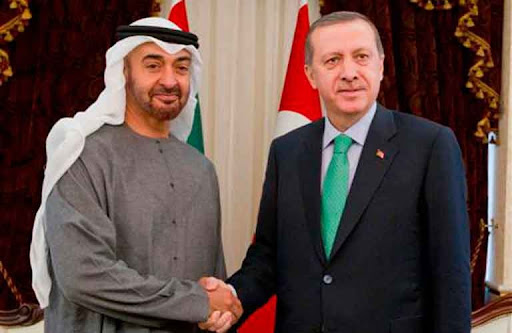The basis of UAE’s power is their corruption of Western governments, subversion of media and influencer networks, and militarized militias/proxies which shield them from accountability.
Their presumption was this would be sufficient to protect them from other regional powers (like Turkey), through US and European sanctions threat. Meanwhile, their mercenaries and proxy warlords allowed them to conquer vulnerable, resource rich African states.
This presumption proved wrong, as UAE was routed in Libya, and later their expected influence in Afghanistan was overthrown, with rival Qatar filling the void.
They found themselves critically isolated, with only media echo chambers and impotent US politicians by their side. This led to their panicked normalization with Israel, in anticipation of receiving F-35s and other perks. Whether their expectations were fulfilled, is debatable.
Surprisingly, they managed to reevaluate their core policy, and adopted a “multipolar model”, which led to the more maneuverable political stance of today. This sees them continue their fight with Qatar, but through constructive out-competition of Qatari influence within Turkey.
They are also trying to wrestle Egypt into their sphere of influence, through the threat of alternate transit corridors which would starve Egypt of relevance and wealth. These plans are reported to involve both Turkey and Iran. This reproachment is possible due to Erdogan’s pragmatic approach to governance.
The possibility of a deal, and evidence of UAE’s new political maneuverability (which will be shown if the expected MBZ-Erdogan meeting occurs), may be sufficient to pressure Egypt into concessions, even if the new transit corridor isn’t realized. This episode shows how a multipolar world, where no player is strong enough to unilaterally impose its will on the region, forces actors into a more constructivist, competitive, and pragmatic, policy.






